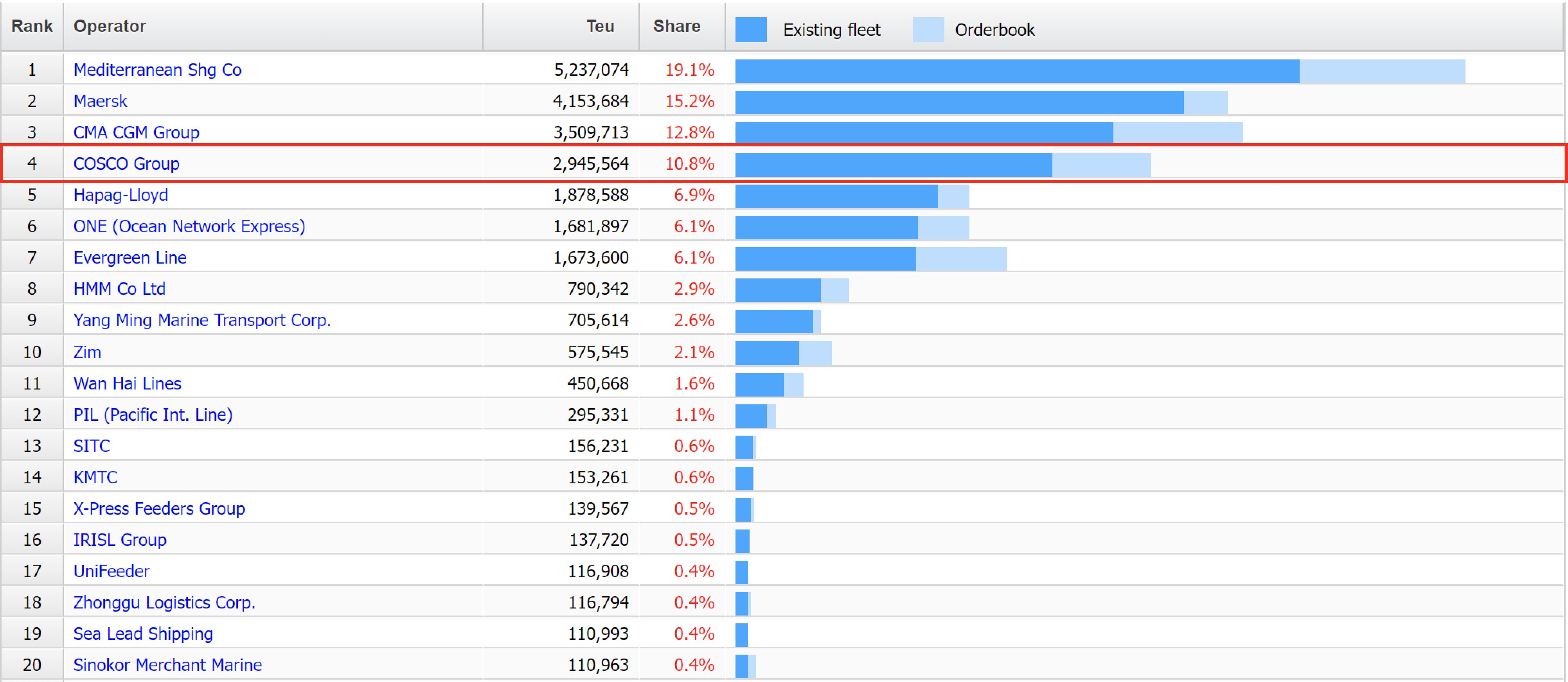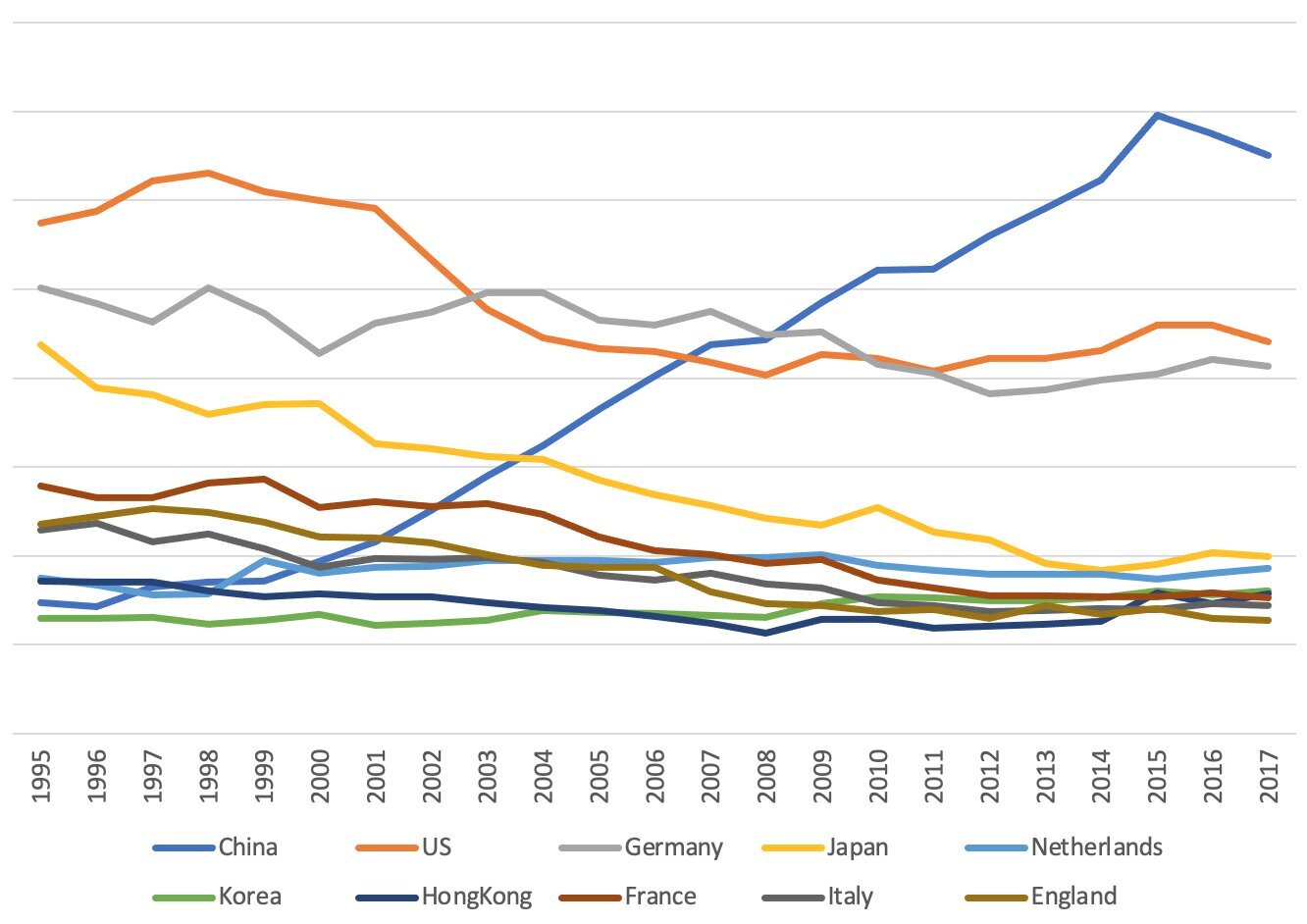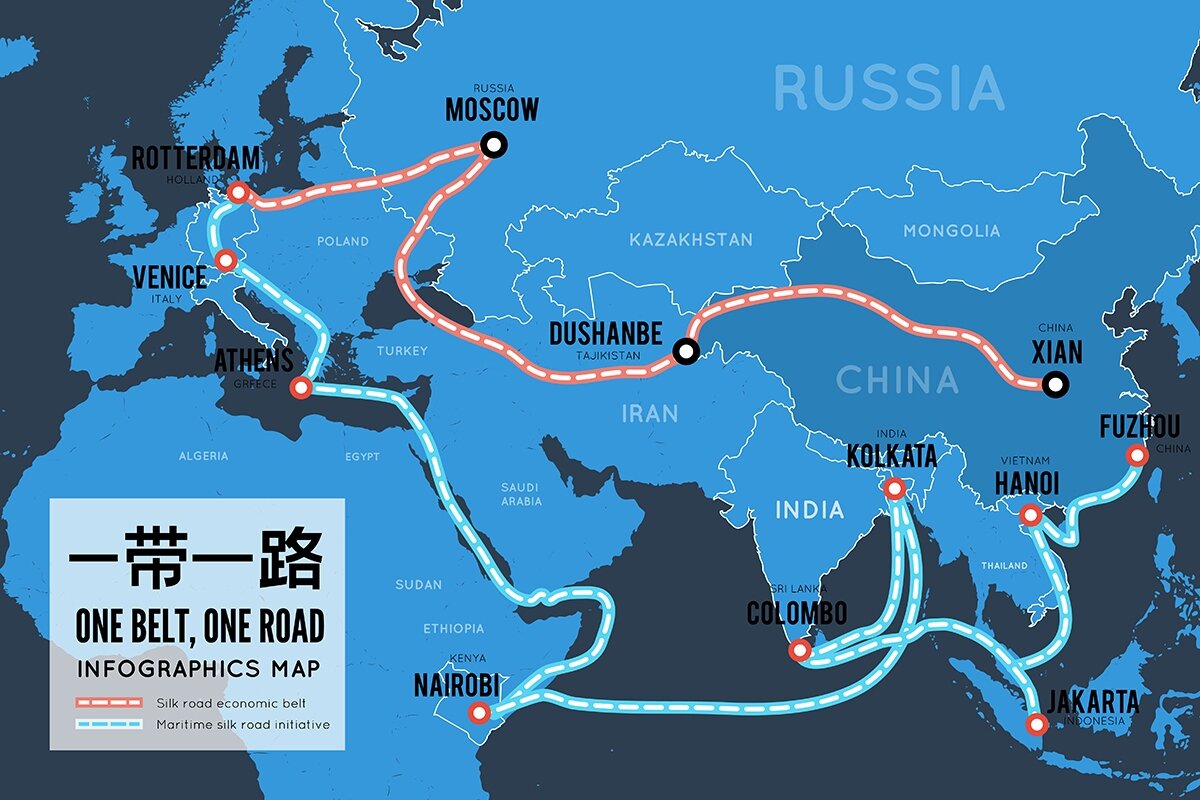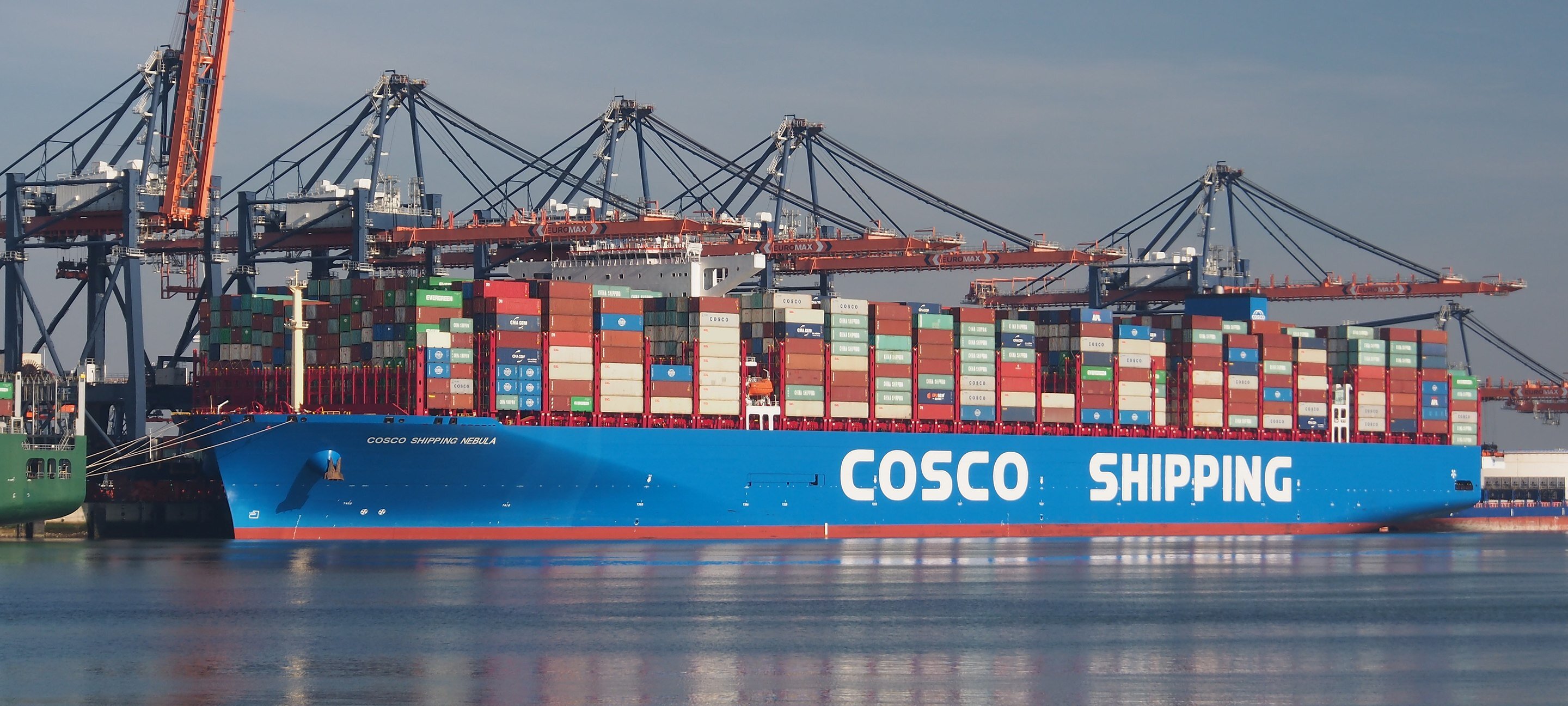Introduction of COSCO and how to track containers

Ayana CEO
After graduating from the Faculty of Literature at Kobe University, she joined Rakuten Inc. to learn the fundamentals of e-commerce. Later, she switched to a foreign manufacturing company and faced challenges from the manufacturer's perspective. While studying business strategy in an evening MBA program, she developed an interest in marketing for luxury brands rather than FMCG (Fast-Moving Consumer Goods). This led her to study abroad at ESSEC Business School in France. Upon returning to her home country, she worked as an EC Manager for a foreign cosmetics manufacturer, served as a CMO for a startup, and eventually founded MonCargo.
What is COSCO?
COSCO SHIPPING LINES CO., LTD. (China Ocean Shipping Group Company) is a state-owned shipping company in China, currently boasting the 4th largest container capacity in the world according to Alphaliner rankings.

※Alphaliner|Alphaliner TOP 100 viewd on 25 Aug 2023
China COSCO Shipping Corporation Limited was officially launched in February 2016, following the merger of two major state-owned shipping companies in China, COSCO and China Shipping. This merger was influenced by the growth of the Chinese economy in the 2000s.
Development of the Chinese Economy and Trade & Export
After the establishment of the People's Republic of China in 1949, the new government aimed to develop domestic infrastructure and the economy. Initially, China had only about 200,000 tons of ships. In the 1960s, foreign shipping became a significant policy, and in 1961, the China Ocean Shipping Cooperation, commonly known as COSCO, was established. However, even then, "more than 80% of foreign maritime trade was transported by foreign ships until 1972" (Matsumoto, 1986).
The 1970s brought political changes in China. After Mao Zedong's death in 1976 and the establishment of the Deng Xiaoping administration in 1977, the Communist Party of China announced the adoption of a new constitution aiming for "modernized socialism" in 1978. The Chinese economy began to grow rapidly, with the establishment of special economic zones for foreign trade and opening up to the world, infrastructure development, and the introduction of foreign capital.
▼ Share of world exports by major countries

Source: Created by the author from Ministry of Economy, Trade and Industry data
Entering the 2000s, exports from China surged, and as shown in the graph below, China surpassed the United States, the largest trading nation, in just 15 years, becoming the world's largest trading nation.
Furthermore, in 2013, Xi Jinping proposed the Belt and Road Initiative. The "Belt" refers to the land route, and the "Road" refers to the maritime route. The initiative aims to secure trade routes connecting Europe and Asia by land and sea. It is sometimes called the new Silk Road, reminiscent of the ancient trade route that connected China and Europe for over 1500 years. The name "Silk Road" originates from the trade of Chinese silk.

Source: AsiaSociety
In this initiative, maritime transport plays a crucial role. After the proposal, China made significant investments in major ports and acquired usage rights.
2015: Pakistan - Gwadar Port, 40-year lease
2015: Australia - Darwin Port, 99-year lease (under review)
2016: Greece - Piraeus Port, COSCO acquired 51% of shares
2017: Sri Lanka - Hambantota Port, 99-year usage rights
2022: Germany - Hamburg Port, acquired 24.9% of the port terminal rights
Other acquisitions include the rights to the Kyaukpyu Port in Myanmar, the acquisition of the port facility company in Kumport, Turkey, and more. China has also established a military base in Djibouti, a strategic point for international maritime transport heading to the Suez Canal.
China has also been investing heavily in the Piraeus Port in Greece. After acquiring a 35-year usage right in 2009, they acquired 51% of the port's shares in 2016 and invested 600 million euros in 2019 to develop it into Europe's largest commercial port.
There are voices pointing out that China's massive investments in ports, which have specs beyond what's needed for civilian use, might be intended for dual-use, including potential military applications in emergencies.
Now, back to containers.
Amidst this Belt and Road Initiative, the merger of COSCO and China Shipping was decided, giving birth to a world-class shipping operator. The container shipping business, which was facing intense international competition and oversupply, needed cost reductions and efficiency. (For more details on the container industry at that time, please read this blog.
With the merger of the two companies, there was a reorganization across various sectors, such as container transport, tanker transport, and port operations. In November 2016, Cosco Container Lines Co., Ltd. (Coscon) changed its name to "Cosco Shipping Lines Co., Ltd.", which is the current Cosco Shipping Lines.
COSCO plays a vital role in China's Belt and Road Initiative, representing the country's economic strategy. With aggressive investments in many international ports and logistics facilities, it can be said that COSCO supports China's international economic development.

Image Source :Wikipedia
References accessed on August 25, 2023
China's Belt and Road Initiative: Examining Its Economic and Military Implications | Asia Society
Daily Cargo|2016/12/8
JBpress 2022/4/12
MATSUMOTO, Isamu, "New Chinese Shipping Policy and Port of Nagasaki", Surveys and Research, Culture & Economy Research Institute, Nagasaki Prefectural University of International Economics, 17(1),1986, pp.11-63. URI: http://hdl.handle.net/10561/1382
NHK News 2022/8/30
Nikkei 2015/9/18
Reuter 2018/1/3
Reuters 2019/11/12
Reuters 2022/10/26
THE SANKEI NEWS 2018/1/11
THE SANKEI NEWS 2019/1/1
[THE JAPAN MARITIME DAILY|2016/2/19
"―One Belt, One Road―", Port and Harbor Bureau, Ministry of Land, Infrastructure, Transport and Tourism
World of history, "Reform and door-opening policies"
COSCO SHIPPING LINES Container Tracking and Tracing Methods
COSCO can be searched on the site by container number, B/L number or booking number.
COSCO Container Tracking is available here
MonCargo tracking service is recommended for container tracking.
Tracking for each shipping company can also be found on their websites. If you only deal with one shipping company, you may want to check these pages.
However, even if you only deal with one carrier, it is time-consuming to check each time to see if the container schedule has changed. Also, you may be asked by other related departments if there has been a change in the ETA schedule. If you are using more than one shipping company, it is even more complicated to manage.
With MonCargo, you will receive email notifications when there is a change in the schedule so you don't miss it. Also, if there are other people in your company tracking the same container, you can share container information with your team, eliminating the need to share information via email or chat.
Want to start tracking containers with MonCargo?
Container trackings made easy
Sign up for MonCargo for free for 30 days from here
For more information, please contact us at
info@moncargo.io